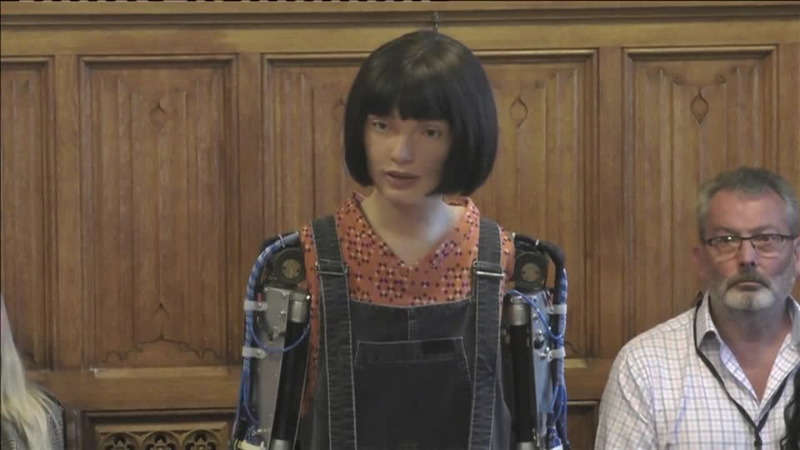
DAVID ADAMS provides a round-up of some stories on the odder side of life…

A “robot artist” called Ai-Da told British lawmakers on Tuesday, 11th October that although it was an artificial creation, it was still capable of producing art, as it spoke at a parliamentary inquiry into how new technologies will affect the creative industries.
• A “robot artist” called Ai-Da told British lawmakers on Tuesday that although it was an artificial creation, it was still capable of producing art, as it spoke at a parliamentary inquiry into how new technologies will affect the creative industries. Described as “the world’s first ultra-realistic AI humanoid robot artist”, it appeared in one of parliament’s ornate wood-panelled rooms, wearing a short black-haired wig and denim dungarees. Bearing a female humanoid face and with exposed robotic arms, Ai-Da was created by scientists at the University of Oxford and named after British mathematician and computer pioneer Ada Lovelace. It answered questions alongside the head of the Ai-Da project and art gallery director Aidan Meller in a televised session hosted by the House of Lords Communications and Digital Committee. “I am, and depend on, computer programmes and algorithms. Although not alive, I can still create art,” Ai-Da said when asked how its creations differed from those produced by humans. Ai-Da has created a series of works, including a painting of the late Queen Elizabeth, and the works have been shown in exhibitions and galleries. The committee heard from the humanoid robot as well as industry experts and academics about the effects of technology on workers in the creative industry. Answering the first question from the committee on how it produced paintings, Ai-Da said AI algorithms, cameras in its eyes, and a robotic arm helped it paint on a canvas. Ai-Da also explained how “analysing a large corpus of text” to identify common content and poetic structures enabled it to generate new poems. “How this differs to humans is consciousness; I do not have subjective experiences despite being able to talk about them,” Ai-Da said. – FAROUQ SULEIMAN/Reuters
• Scandal at Alaska’s Fat Bear Week in with authorities in Katmai National Park in Alaska forced to recount votes after they said a ballot box had been “stuffed” in favour of a brown bear called Holly. The knock-out style annual competition allows people to vote on which brown bears have gained the most weight between summer and fall. Results initially showed that Holly – more formally Bear 435 – had triumphed over Bear 747 but authorities at the park subsequently reported ballot stuffing, adding that “fortunately it is easy for us to tell which votes are fraudulent”. They discarded the fake votes which then had Bear 747 winning by more than 7,000 votes. Bear 747 went on to beat Bear 901 in the finals, taking a second crown.
• The world’s largest Tetris game has been created in Spain, setting a new Guinness World Record for the largest arcade machine in the process. Games company MadLab (Spain) created the super-sized game which stands 4.9 metres tall and 1.98 metres wide. “We love video games, we like going BIG and we enjoy breaking the limits,” MadLab told Guinness when asked why they aimed for a world record. “We love that the public can enjoy everything we do. Our goal is to be the reference in the world of experience, leisure and entertainment.”






